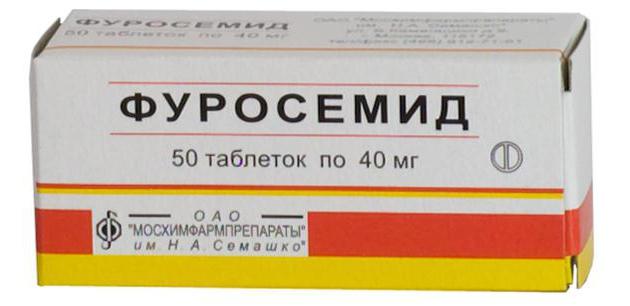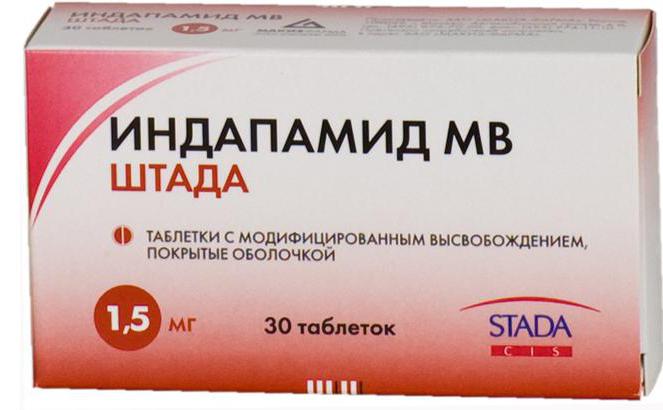Diuretic - what is it? Classification and principle of action of diuretics
Many have heard the term "diuretic" more than once. What it is, we will try to figure it out below. This group of drugs has its own classification, properties and features.
Diuretic - what is it?
Also called diuretics. They are drugs of synthetic or herbal origin that can increase the excretion of urine by the kidneys. Due to this, along with urine, water also increases, and the level of fluid in the cavities and tissues of the body decreases. Because of this, swelling decreases or disappears altogether. Diuretics are drugs that are widely used in the treatment of hypertension (high blood pressure). They are often used to treat mild congestive heart failure, as well as a number of liver ailments and diseases associated with circulatory disorders that provoke congestion in the body. Often, diuretic medications are used to reduce or completely eliminate the symptoms of flatulence, which sometimes accompanies PMS or manifests itself already during menstruation. With strict adherence to the treatment regimen and dosages, diuretics do not cause severe side effects. They are quite safe to use.
during pregnancy
Many gynecologists advise against drinking diuretics during pregnancy. Drugs may be unsafe for the fetus and the health of the mother. Negative action was discovered not so long ago. Previously, diuretic drugs were used to reduce edema in pregnant women, counteract preeclampsia, etc.

Diuretics: classification
There are different types of diuretic medications. Each category has its own disadvantages. To date, there are such groups of drugs:
Loop medications.
thiazide drugs.
. thiazide-like agents.
These groups will be discussed in more detail below.

Loop diuretics
This category of drugs is the most common. It includes such drugs as "Etacrynic acid", "Torasemide", "Furosemide", "Piretanide", "Bumetanide". Despite the fact that they can differ significantly in chemical structure, these diuretics have the same mechanism of action. These medications inhibit the reabsorption of substances such as sodium, chloride and potassium. The name "loop diuretics" refers to their mechanism of action. Resorption occurs in the ascending lobe of the loop of Henle. It is carried out due to the blockade of sodium, chlorine, potassium ions in the apical membrane of the tubular epithelium of cells. Due to this, the work of the rotary-countercurrent system in the kidneys is suppressed. In addition, diuretics of this type are able to expand the vessels of the cortical substance.

Side effects of loop diuretics
The strength of the effect of these medications is unusually high: they can increase diuresis by 25%. Unlike other drugs that lose their effect with the normalization of BCC, loop-type diuretics continue to function under these conditions. It is due to the strong diuretic effect that they can provoke such side effects. The most rare and severe are a drop in blood pressure, hypovolemia, a decrease in the level of GFR and renal blood flow. Due to the increased level of excretion of hydrogen, chlorine and potassium, metabolic alkalosis is not excluded. Sometimes loop diuretics provoke hyponatremia and hypokalemia. In rare cases - hyperglycemia, hyperuricemia. Other side effects are: lightheadedness, nausea, weakness. The drug "Ethacrynic acid" often provokes permanent or temporary deafness, as well as neutropenia. All medications of this type, which were listed above, are excreted from the body with the help of the kidneys, metabolized in the liver.

Indications for loop diuretics
These medications are prescribed for any type of heart failure. And they are especially necessary for diseases such as refractory heart failure and pulmonary edema. The drugs are also effective for hyponatremia, hypoalbuminemia, hypokalemia, hypochloremia, and renal failure. Loop diuretics continue to work when other groups of diuretics and their combinations are ineffective. This is their great value. Therefore, this type is so common - a loop diuretic. What is it, we have already figured out.

Thiazide diuretics
These medications and their derivatives ("Indapamide", "Chlortalidone" and "Metolazone") are used quite often. First of all, this is due to their high rate of absorption in the gastrointestinal tract, as well as a good level of tolerance by patients. Thiazide diuretics are less powerful than loop diuretics, but due to the long duration of action, they are indicated for people with chronic ailments such as arterial type and mild congestive heart failure. Thiazide diuretics are prescribed for oral administration. Diuresis usually begins after 1-2 hours, but the therapeutic antihypertensive effect in some cases can be observed only after 3 months of continuous treatment. The ancestor of this group is chlorothiazide. It is characterized by low fat solubility and, consequently, low bioavailability. Because of this, higher dosages of the drug are required for a therapeutic effect. The drug "Chlortalidone" is rather slowly absorbed, so its duration of action is somewhat longer. Metolazone is often very effective in patients with reduced kidney function, unlike other medications in this category.
Potassium-sparing diuretics
There is also a potassium-sparing diuretic. What it is? These drugs are used to treat hypertension in combination with other types of drugs. They prevent excessive excretion of potassium from the body, which is a common side effect of diuretic drugs in other categories. Hypokalemia is a decrease in plasma potassium levels. It is a constant companion of thiazide diuretics, which are often prescribed for the treatment of hypertension. When the level of potassium is greatly reduced, the patient begins to experience weakness, gets tired faster, he develops. To prevent this, along with thiazide drugs, potassium-sparing diuretics are often prescribed. They retain in the body, along with potassium, other essential minerals - magnesium and calcium. At the same time, they practically do not delay the withdrawal of excess fluid and sodium. The disadvantage of potassium-sparing medications is as follows. Plasma potassium levels may increase excessively (greater than 5 mmol/L). This condition is called hyperkalemia. It can cause muscle paralysis and heart rhythm disturbances, up to its complete stop. The development of pathology is most possible in patients with renal insufficiency.
Use to treat hypertension

Diuretics for hypertension have proven themselves well. They contribute to the removal of fluid from the body, which reduces pressure. A proven fact is that diuretic drugs are more effective for the treatment of elderly patients in comparison with beta-blockers. Diuretic medications are included in the list of first-line medications that are used to normalize blood pressure. This category should be used in the initial treatment of hypertension (uncomplicated) according to US medical guidelines. Due to the importance of blood pressure control, as well as the reduction of cardiovascular risks during treatment, special attention is paid to the metabolic effects that are inherent in antihypertensive medications. Their influence on the course of associated ailments and organ-protective characteristics is also important.
Thiazide-like and thiazide medications for hypertension
Previously, hypertension was usually treated with loop diuretics. But now they are more used for the treatment of renal, heart failure and edema. The results of studies have shown good efficacy of thiazide-type drugs. They improve the prognosis of hypertension. However, the reduction in the risk of coronary complications when using these funds was not as pronounced in comparison with the expected results. The use of thiazide drugs increases the likelihood of developing arrhythmias. In some patients, even sudden arrhythmic death is possible. Also, there are frequent violations of carbohydrate and lipid metabolism, as well as hyperuricemia. The course of atherosclerosis and diabetes mellitus may be aggravated. Medications in this group are often combined with potassium-sparing diuretics.
Thiazide-like agents became the next level of evolution of diuretics for the treatment of hypertension. In particular, their ancestor synthesized in 1974, the medical preparation Indapamide, has proven itself well. The advantage is that thiazide-like agents have much less effect on sodium reabsorption, which means they remove significantly less potassium from the body. Therefore, negative metabolic and diabetogenic effects are practically absent. It has now been proven that the drug "Indapamide" used in small doses, in addition to the diuretic effect, is able to play a role due to vasodilating activity and stimulating the production of prostaglandin E2.
In modern conditions, thiazide and thiazide-like medications are very widely used not only to reduce blood pressure, but also for preventive purposes, as well as for the treatment of target organ damage. These drugs are very often prescribed as part of combined courses of therapy. They have proven themselves well and therefore are widely used in different countries of the world.





